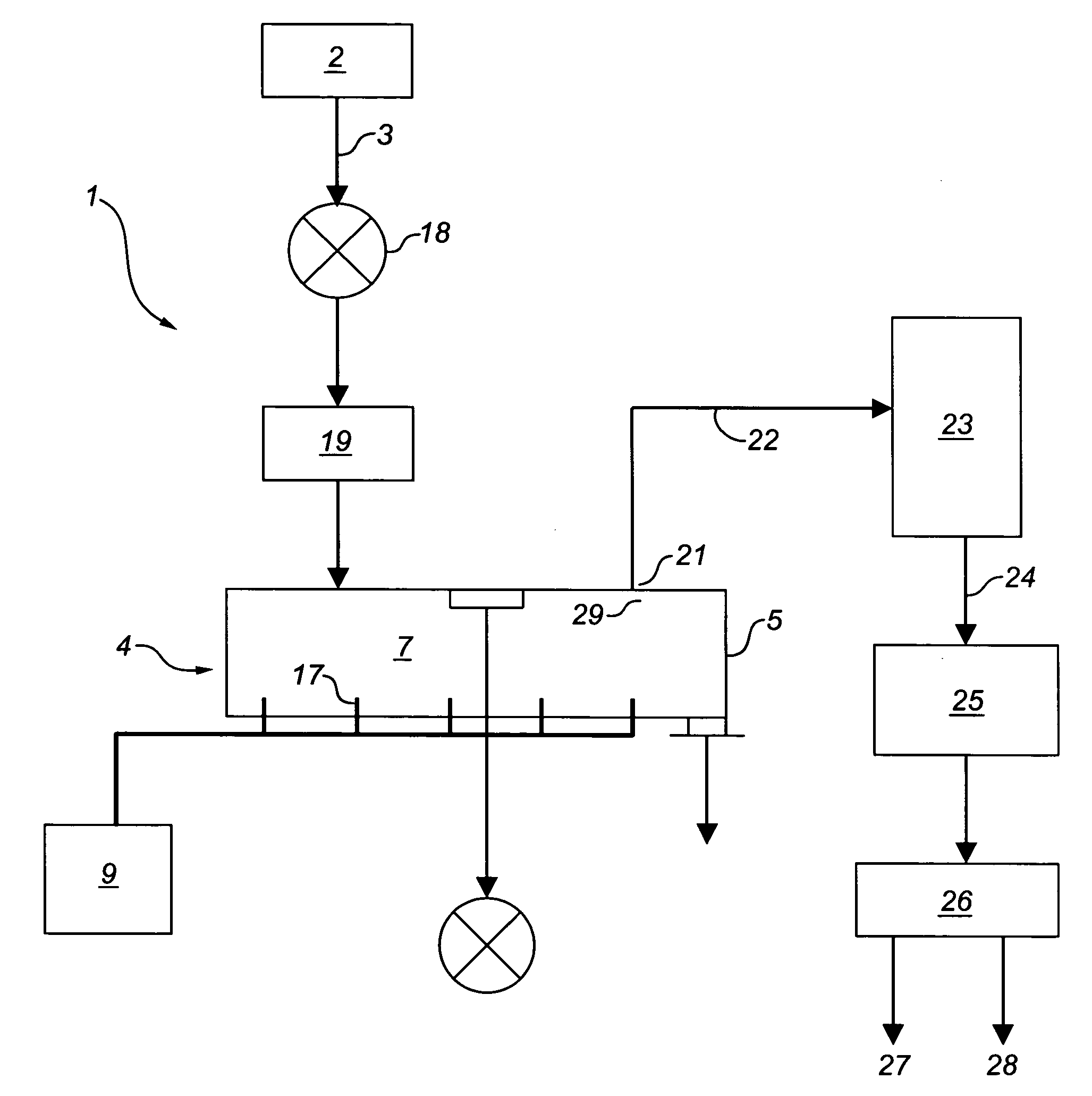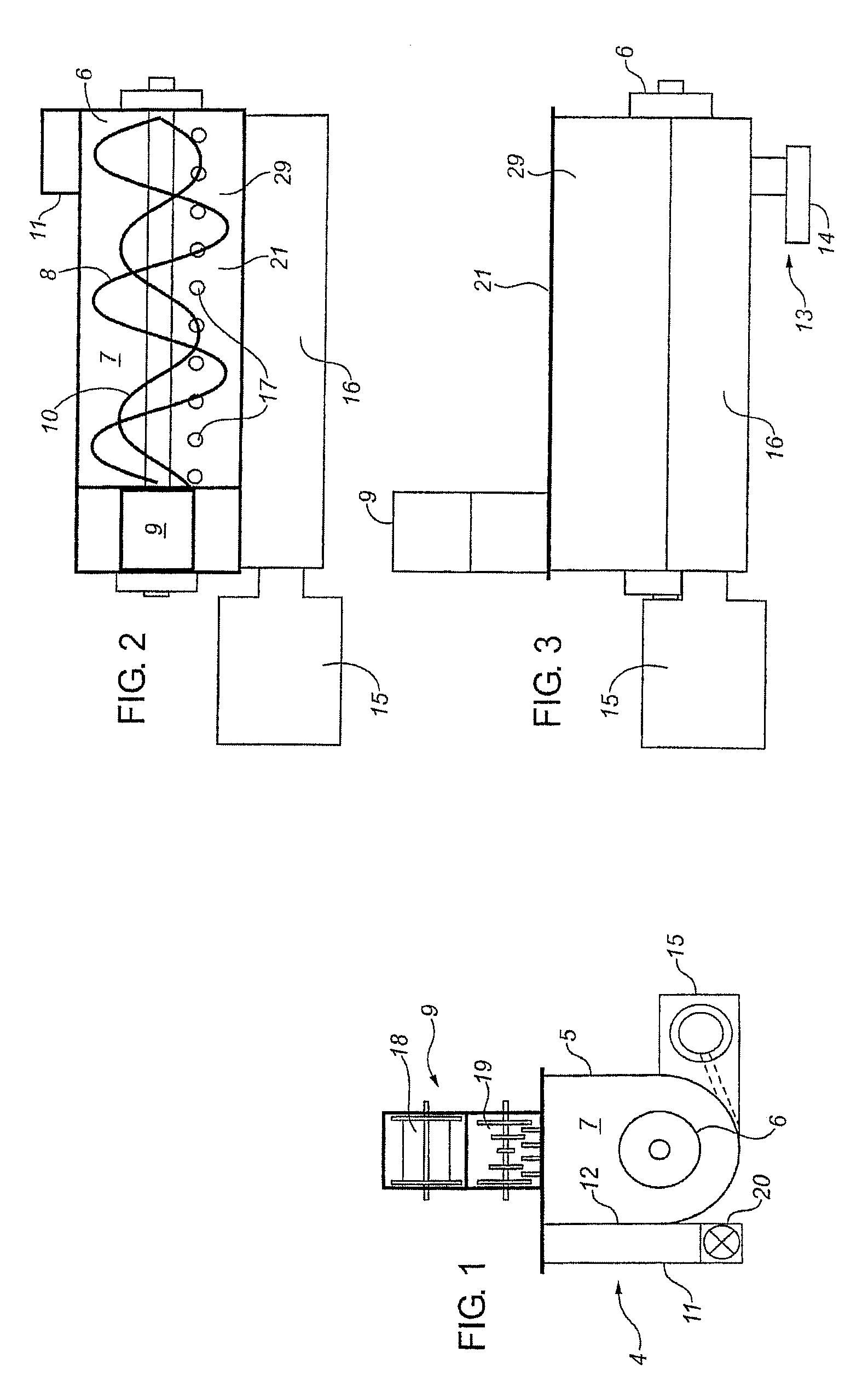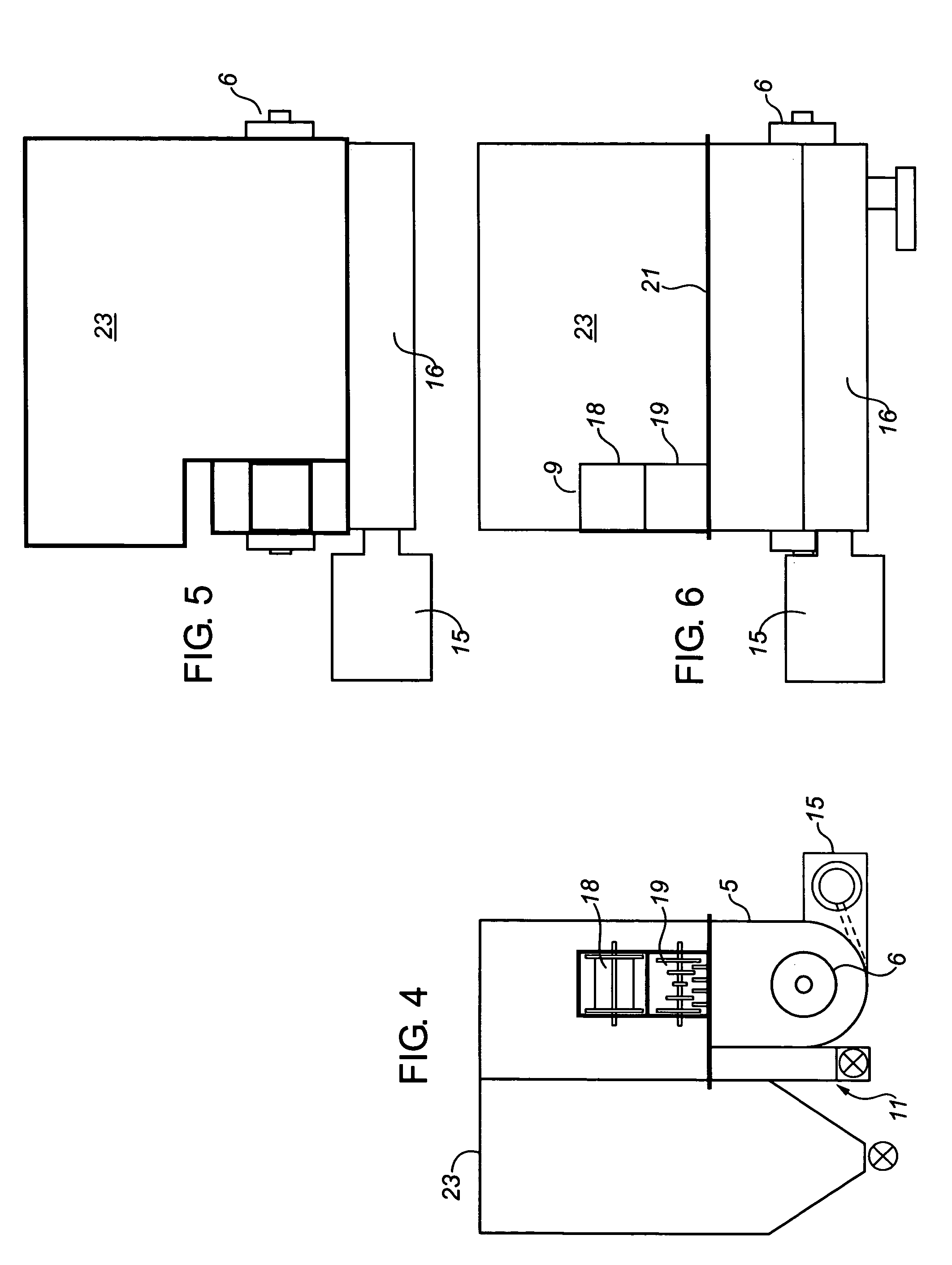Apparatus and process for removing liquids from drill cuttings
a technology for removing liquids and drill cuttings, applied in the direction of cleaning using liquids, separation processes, borehole/well accessories, etc., can solve the problems of limiting the ability for overboard disposal, difficult to remove wet cuttings, and difficult to clean, etc., to reduce caking
- Summary
- Abstract
- Description
- Claims
- Application Information
AI Technical Summary
Benefits of technology
Problems solved by technology
Method used
Image
Examples
Embodiment Construction
[0048]Having reference to FIG. 7, the illustrated drill cuttings cleaning system 1 may be used in-line with a source 2 of wet cuttings 3, such as an on-going drilling rig operation, from which it directly receives wet drill cuttings 3 from the rig's cuttings / fluid separation assembly. Alternatively the cleaning system 1 may be supplied with cuttings 3 from another source, such as a sump left after drilling has ended. The cuttings 3 may be supplied at a constant or variable rate on a continuous or batch basis.
[0049]In the case of an on-going drilling operation, the drilling fluids are circulated through the borehole to carry drill cuttings from the bottom of the borehole to ground surface while drilling is taking place. It is necessary to remove most of the solid drill cuttings from the drilling fluid to maintain proper fluid properties for hole cleaning and other related concerns such as well bore stability, rate of penetration and formation damage.
[0050]The solid drill cuttings are...
PUM
| Property | Measurement | Unit |
|---|---|---|
| temperature | aaaaa | aaaaa |
| density | aaaaa | aaaaa |
| density | aaaaa | aaaaa |
Abstract
Description
Claims
Application Information
 Login to View More
Login to View More - R&D
- Intellectual Property
- Life Sciences
- Materials
- Tech Scout
- Unparalleled Data Quality
- Higher Quality Content
- 60% Fewer Hallucinations
Browse by: Latest US Patents, China's latest patents, Technical Efficacy Thesaurus, Application Domain, Technology Topic, Popular Technical Reports.
© 2025 PatSnap. All rights reserved.Legal|Privacy policy|Modern Slavery Act Transparency Statement|Sitemap|About US| Contact US: help@patsnap.com



